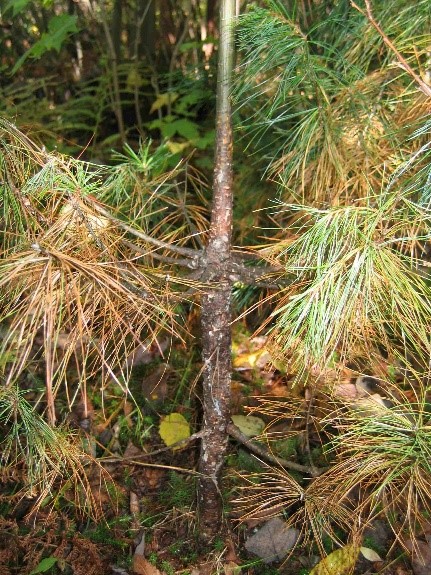
Firewood management
La Mauricie National Park
Is your camping trip finally booked? Are you already dreaming of marshmallows around the fire? Parks Canada would like to remind you that bringing firewood into national parks is banned because of the risk of spreading pests and diseases that are harmful to our forests.
What is the problem?
Diseases and insects can survive in firewood and spread to the surrounding forest. A single log of wood can destroy millions of trees.
Beech bark disease, white pine blister rust and butternut canker are diseases present in some areas of the forests in La Mauricie National Park. In addition, two insect pests, the emerald ash borer and gypsy moth, are already present throughout Quebec.
The transport of wood is one of the primary ways these forest pests disperse, and it plays a role in accelerating their spread.
Parks Canada asks that you therefore leave your firewood at home and instead purchase local wood that is available in the park and burn it on site.
Why must we act now?
Once established, the spread of diseases and insect pests is very difficult to stop. The best method of control remains prevention.
Given the seriousness of these threats to the sustainability of the forests, all reasonable measures are being taken to ensure forest health and the ecological integrity of the park.
That is why Parks Canada bans the entry of firewood into the park. In doing so, the Agency supports the "Don't move firewood" campaign coordinated by the Canadian Food Inspection Agency (CFIA) to protect Canada’s forests.
How can you help us?
Protecting Canada’s forests is a shared responsibility. Keep these few rules in mind during your camping trip:
- Never bring wood from outside the park;
- Buy your wood in the park and burn it on site;
- If you have some leftover logs, don’t bring them home.
Insects and diseases: the facts

Butternut canker
Butternut canker is an infection caused by a fungus (Ophiognomonia clavigignenti-juglandacearum) that mainly affects butternut trees.
No control for the fungal disease exists and butternut trees are not resistant to it. Therefore, the best strategy for controlling this pest remains prevention. The butternut tree has been protected under the Species at risk Act since 2005.
Emerald ash borer

The emerald ash borer (Agrilus planipennis) is a torpedo-shaped beetle species.
Most species of North American ash trees are very vulnerable to this insect, which feeds on tree fibres. It has destroyed millions of trees in Canada in forested and urban areas. In La Mauricie National Park, it attacks the American white ash and the black ash, a species designated as threatened by the Committee on the Status of Endangered Wildlife in Canada since 2017.
No natural North American predators, such as woodpeckers, other insects or parasites, have been able to slow the spread of the emerald ash borer or prevent it from destroying trees.

White pine blister rust
This disease is caused by Cronartium ribicola J. C. Fischer ex Rabenh, a fungus first observed in Quebec in 1916. It is thought to have been introduced by contaminated but asymptomatic plants imported from Europe. The disease is now widespread throughout the white pine range.
Blister rust kills white pine trees of all ages. A high percentage of victims are under the age of 25. The disease can cause significant mortality among seedlings. Some trees die four years after the onset of infection, while others can survive for more than 20 years. Although it does not kill them, the disease weakens the stems of large trees and retards their growth.
Beech bark disease

Beech bark disease is the result of interaction with an insect, the beech scale, and two fungal pathogens.
The disease occurs when fungal spores enter through wounds in the bark, particularly those caused by the beech scale. These sucking insects create thousands of microscopic wounds in the bark in order to feed. A substance produced by the scale insect prevents wounds from healing. Spores of the fungal pathogens can germinate in them, without immediate reaction from the tree.
Beech tree damage affects, among other things, habitat and food availability for a number of animal species. For example, beech mortality can have a dramatic impact on the black bear, which loves to eat the fruit of the beech tree (called the beechnut). In fact, there is a cause and effect relationship between beechnut production and black bear populations.
To learn more
- Date modified :